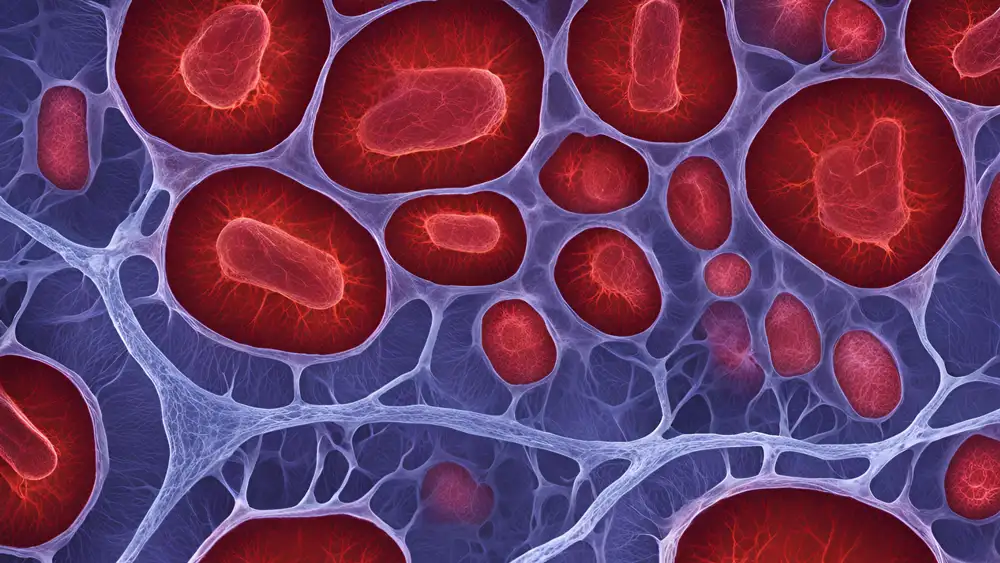In the intricate world of cellular biology, certain molecules serve as vital markers. They offer crucial insights into cell function, development, and potential. One such marker that has captured the attention of researchers across various fields is CD34. This small but mighty glycoprotein plays a pivotal role in cellular interactions. It has become an indispensable tool in both research and clinical applications.
CD34, short for Cluster of Differentiation 34, is a cell surface glycoprotein that functions primarily as an adhesion molecule. It’s involved in cell-cell adhesion and cell-matrix interactions. But CD34’s importance extends far beyond its adhesive properties. It serves as a key identifier for cells that hold potential in regenerative medicine and cancer research.
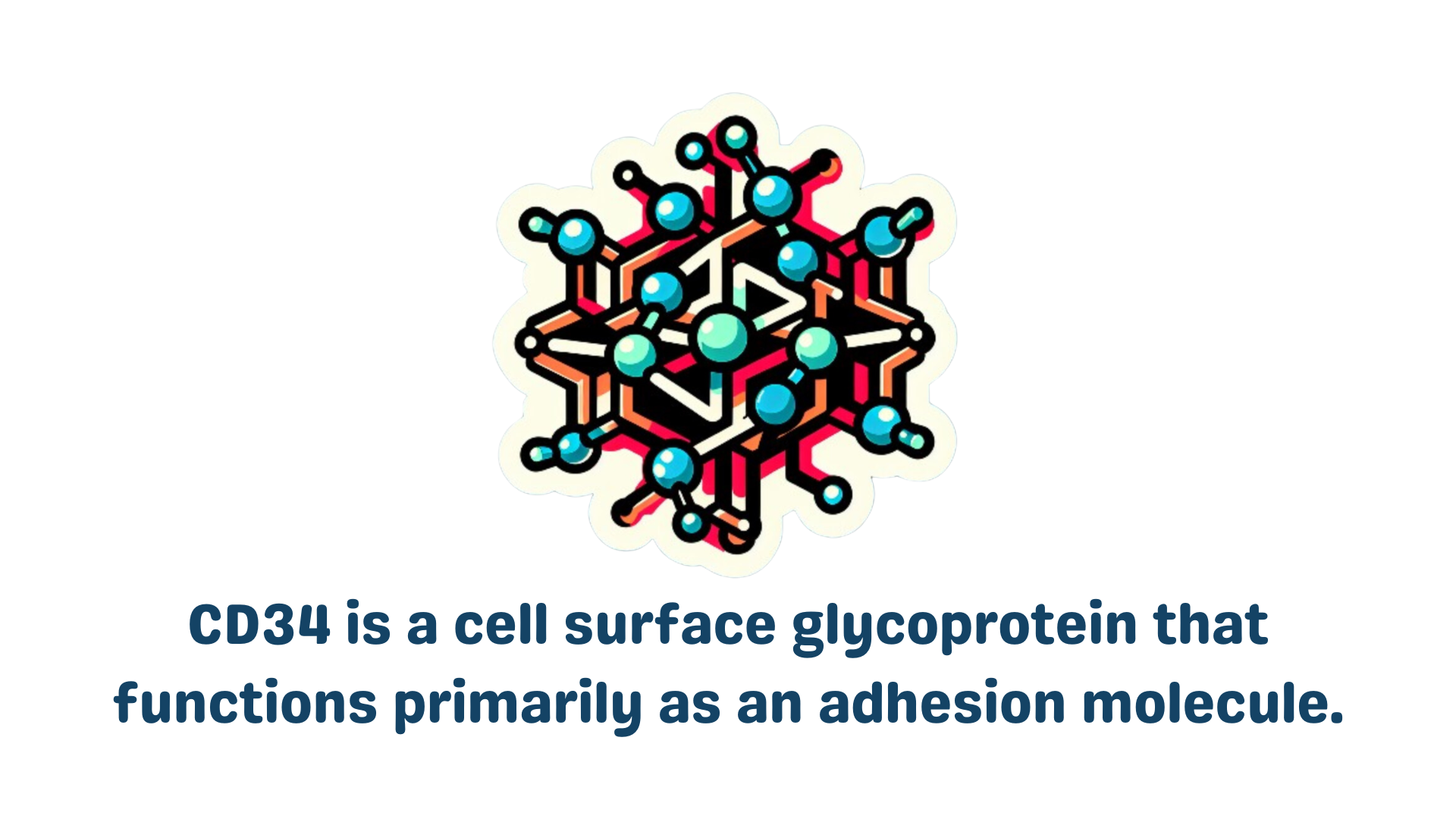
So, which cells bear this molecular badge of honor?
CD34 is predominantly expressed on hematopoietic stem and progenitor cells. HSCs or HPCs are the versatile precursors that give rise to all blood cell types. You’ll also find CD34 on the surface of:
- Vascular endothelial cells and endothelial progenitor cells
- Certain fibroblasts
- Some types of bone marrow stromal cells
The significance of CD34 in scientific research and clinical applications is vast. For example, low CD34+ cell dose, defined by different thresholds depending on the study, showed some correlations with higher rates of nonrelapse mortality (NRM) and inferior overall survival. Additionally, the study of CD34 offers insights into tumor vasculature. CD34 proves to be a powerful tool in our quest to understand cellular differentiation. This protein is revolutionizing fields such as stem cell transplantation, cancer research, and regenerative medicine.
The story of CD34 offers fascinating insights into the complex world of molecular markers and their impact on modern medicine. So, what is CD34 and what does it do?
What is CD34?
CD34 is a transmembrane phosphoglycoprotein expressed on the cell surface. It was initially described in hematopoietic stem cells. CD34 functions as an adhesion molecule between cells. It mediates the attachment of stem cells to the extracellular matrix in bone marrow and other tissues.
In the clinical setting, doctors use CD34 for the isolation and enrichment of hematopoietic stem cells. They do this for bone marrow transplantation.
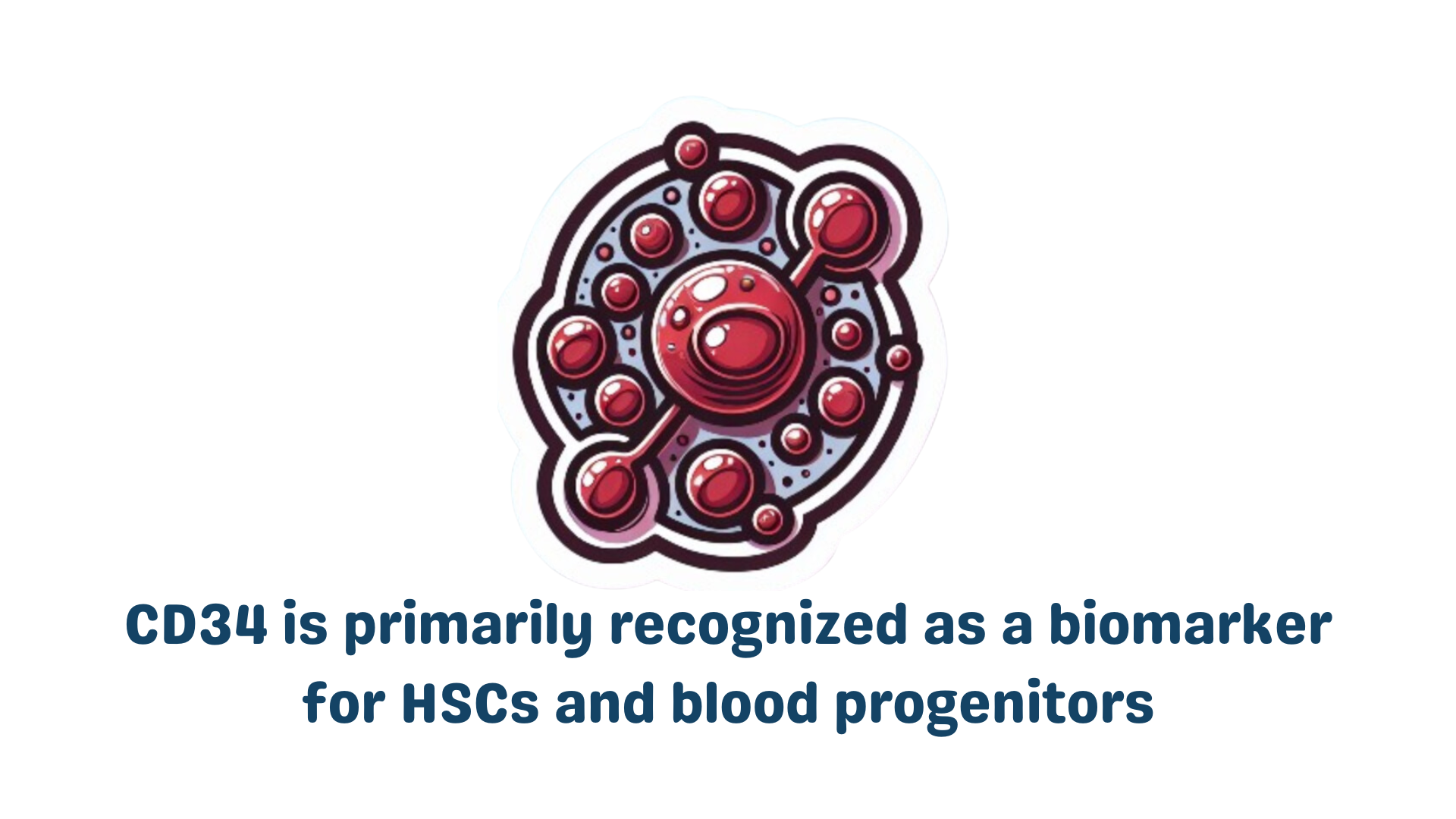
CD34 is primarily recognized as a biomarker for hematopoietic stem cells (HSCs) and blood progenitors. Scientists also identified its expression in several non-hematopoietic cell types.
Researchers documented CD34 expression in a diverse array of cell types, including:
- Hematopoietic stem/progenitor cells
- Multipotent stromal cells (MSCs)
- Muscle stem cells
- Interstitial cells
- Fibrocytes
- Endothelial stem cells
The precise function of CD34 in these various cell populations remains a subject of ongoing investigation.
CD34 Function
Elucidating the binding partners of proteins with known functions can provide crucial insights into their biological roles. These insights could reveal involvement in various pathways and processes.
The precise functions of CD34 proteins remain a subject of debate. Their roles appear to be complex and multifaceted. Proposed functions include:
- Promoting progenitor cell proliferation
- Inhibiting stem cell differentiation
- Enhancing cellular migration and adhesion
- Potentially contributing to cell morphogenesis.
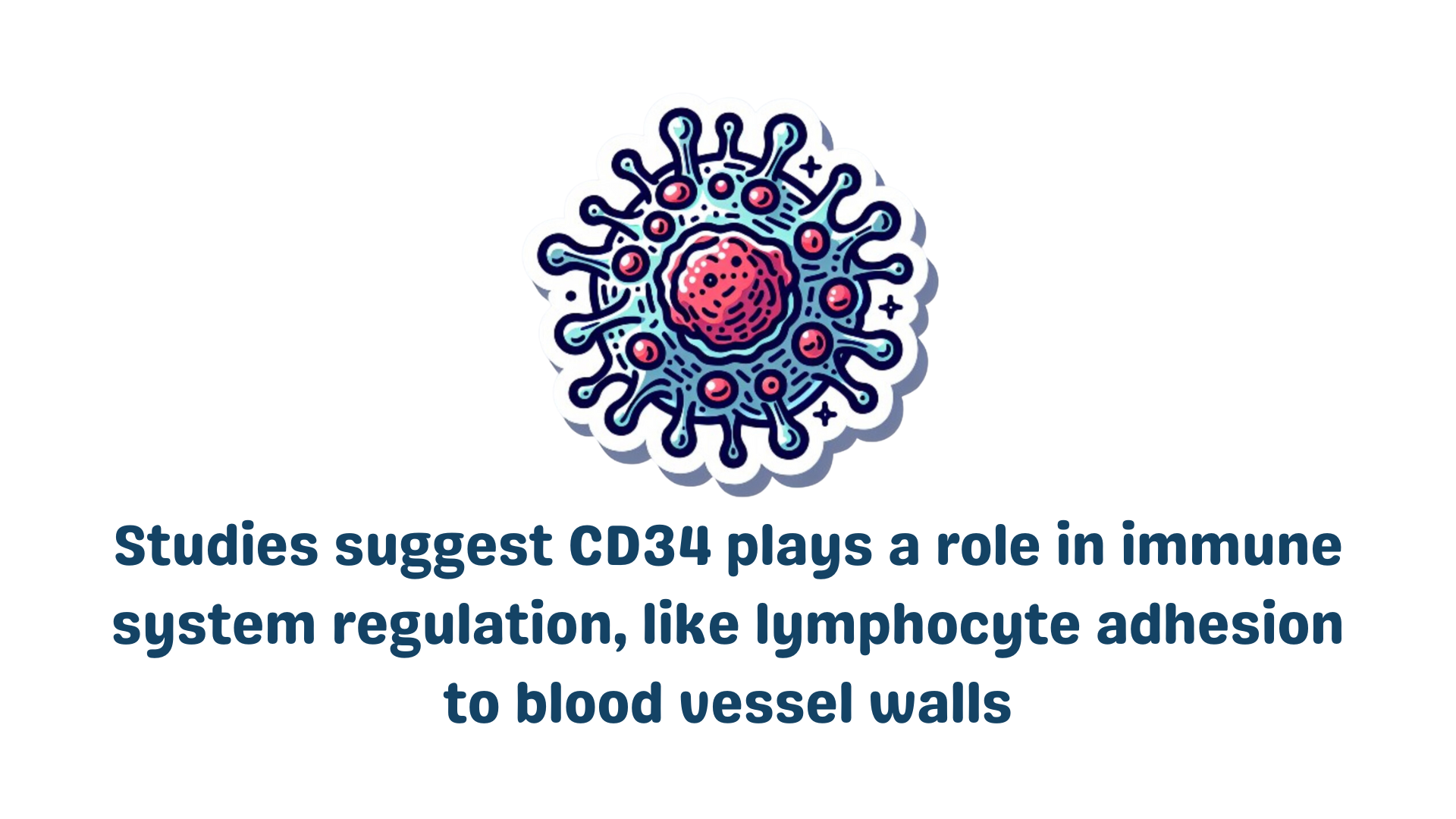
Studies also suggest a role in immune system regulation. More specifically, it might have a role in lymphocyte adhesion to blood vessel walls. However, further investigation is necessary to fully elucidate the diverse functions of CD34 proteins and their contributions to various cellular processes.
Here is what we do know.
Enhancing Proliferation
Discovered in 1984, CD34 is quite large, weighing about 115 kDa. It has three main parts:
- An outer part that sticks out of the cell. This part has many sugar molecules attached to it
- A middle part that goes through the cell membrane.
- An inner part inside the cell that can connect to other proteins.
CD34 mainly interacts with another protein called L-Selectin (CD62L). It also connects with a protein called CrkL, which helps cells stick together.
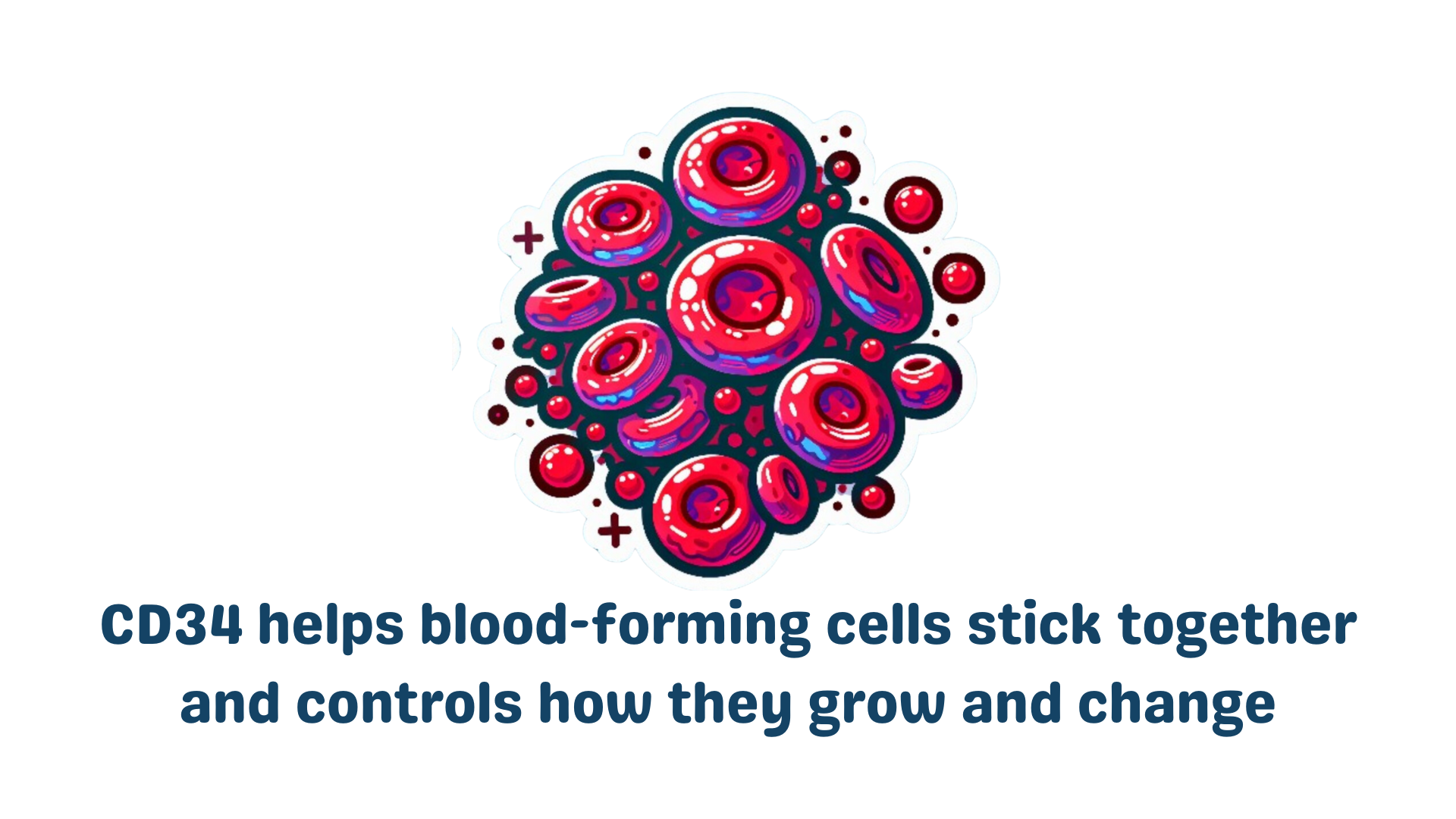
Scientists know a lot about the chemical structure of CD34, but they’re still learning about what it does. In blood-forming cells, CD34 seems to help cells stick together and control how they grow and change. It helps certain white blood cells (lymphocytes) stick to the inside of blood vessels. Some researchers think CD34 might help guide blood-forming stem cells to specific spots in the bone marrow.
Interestingly, CD34 sometimes seems to have dual roles depending on the cell type. In some cases, it helps cells stick together. But in other cases, especially with certain immune cells called mast cells, it seems to prevent sticking.
These findings help scientists understand how blood cells develop and move around the body. This knowledge could be useful for treating diseases that affect blood cells or for improving stem cell transplants.
Enhance Lymphocyte Adhesion
CD34 proteins help lymphocytes stick to special blood vessel walls in lymph organs. Young lymph cells enter these organs through a step-by-step process. The first step involves attaching to special cells lining the blood vessels, or high endothelial venules (HEVs).
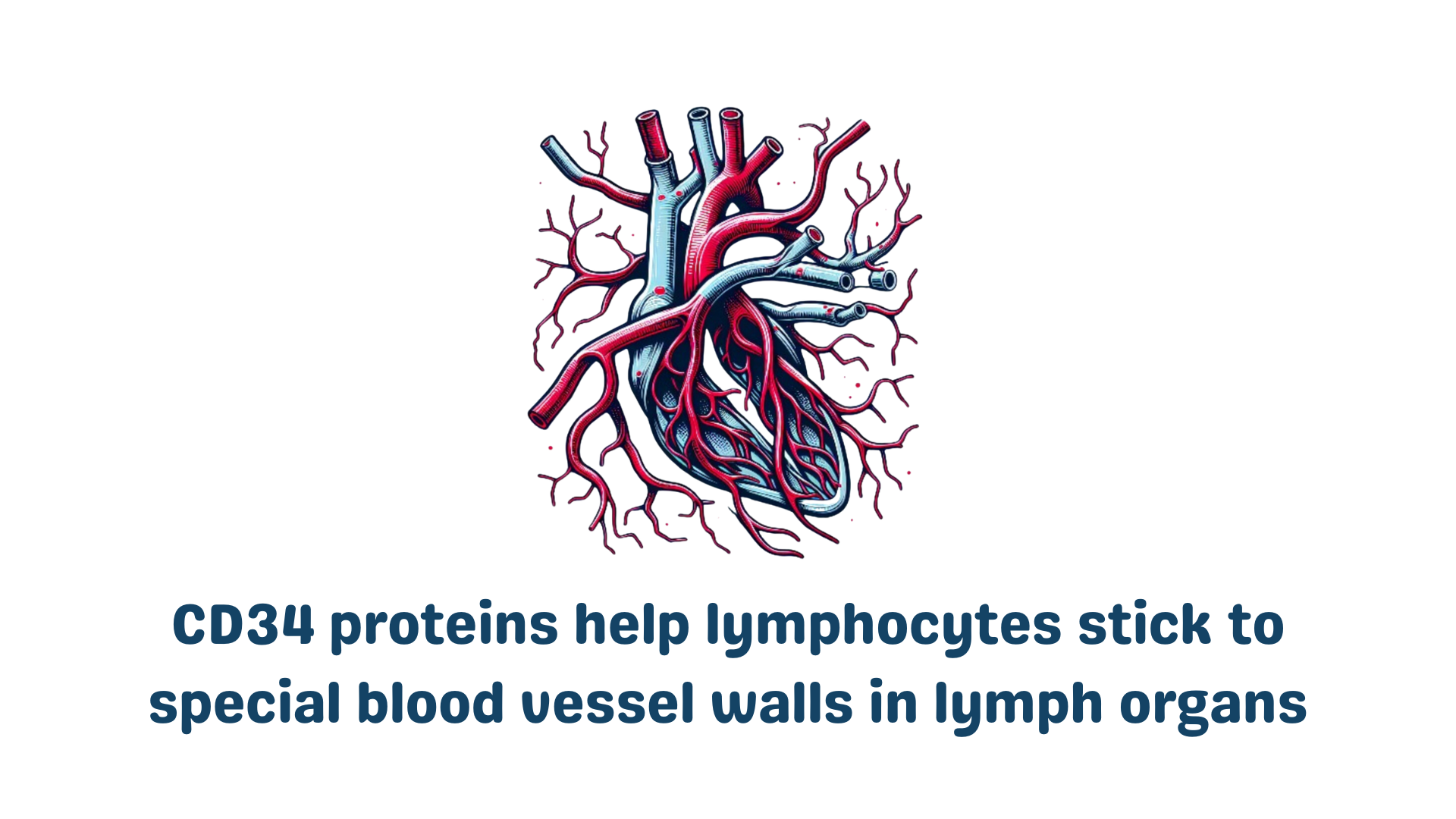
When CD34 proteins appear on these special blood vessels, glycosylation occurs. In other words, the presence of CD34 changes the ‘stickiness’ of the cell. This allows them to interact with another molecule called L-selectin. This helps cells stick together.
Many blood vessels don’t contain CD34 and related proteins. That said, HEVs can modify them to interact with L-selectin. This led scientists to think that CD34 proteins might have a role in cells sticking together.
These findings help us understand how immune cells move around the body and gather in specific places where they’re needed.
Cellular Development
Podocalyxin, a protein related to CD34, is very important for podocytes (kidney cells). These cells have a complex shape with many branches. Podocalyxin covers these cells and helps them keep their special structure. When mice don’t have podocalyxin, their podocytes don’t form properly.
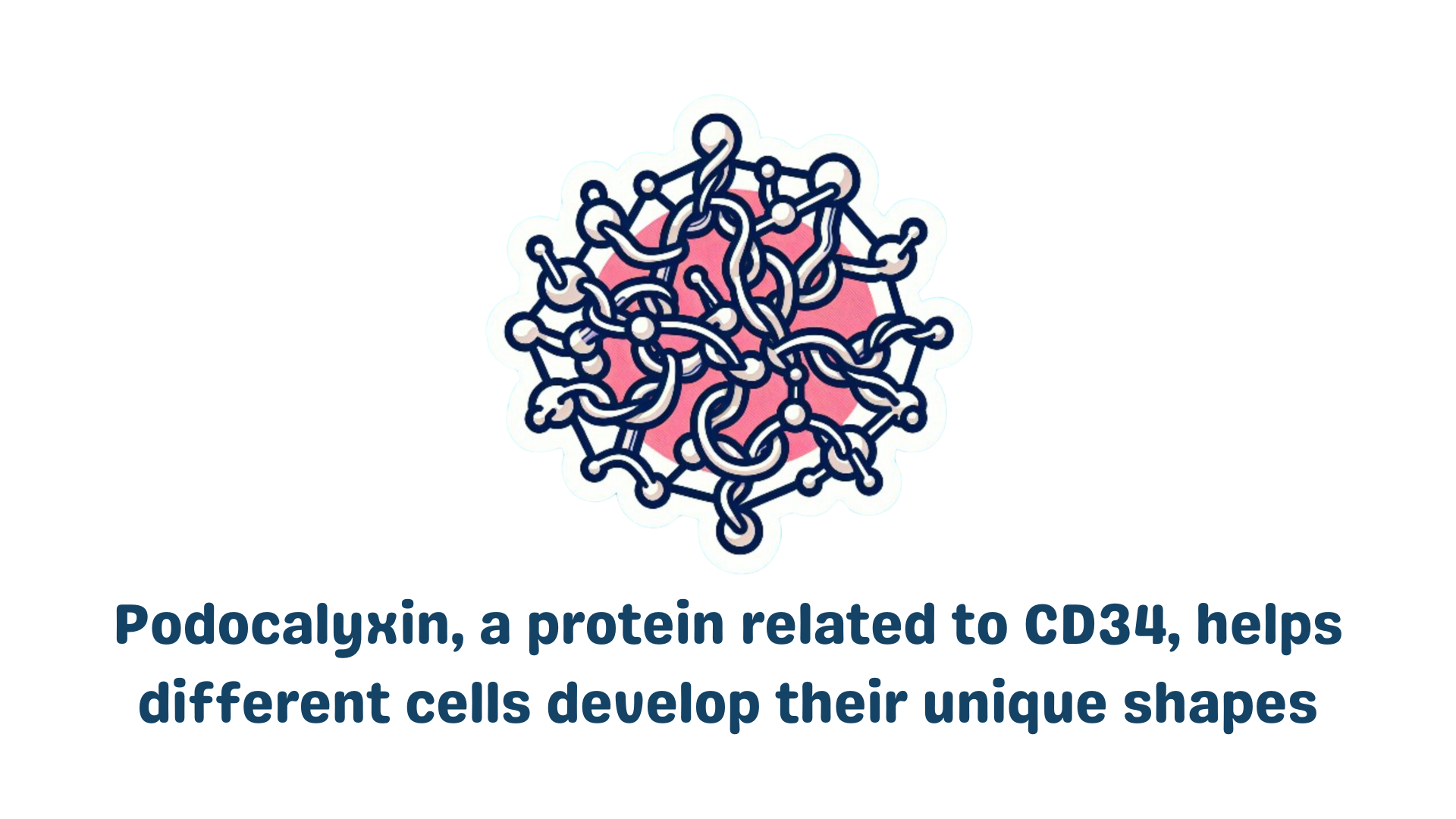
Scientists noticed that podocalyxin connects to the cell’s internal structure. This led them to wonder if podocalyxin might help other cells get their shape too.
Scientists can find podocalyxin in high amounts on cells with complex surfaces. For example, it’s in certain neurons. Like podocytes, neurons have a complex internal structure. Both cell types use similar proteins to build their branching shapes. This suggests that podocalyxin might help in this process.
Another example is in blood cells called megakaryocytes. These cells make platelets, which help blood clot. Podocalyxin helps megakaryocytes form long extensions when they’re making platelets.
These findings show that podocalyxin might play a role in helping different types of cells develop their unique shapes. However, scientists are still studying exactly how this works and what it means for our bodies.
What cells show CD34?
CD34 is primarily known for its association with hematopoietic stem cells. However, its expression isn’t limited to this cell type alone.
CD34 serves as a marker for a surprisingly diverse array of cells throughout the body. This versatility makes the gene an intriguing subject of study in various fields of biology and medicine.
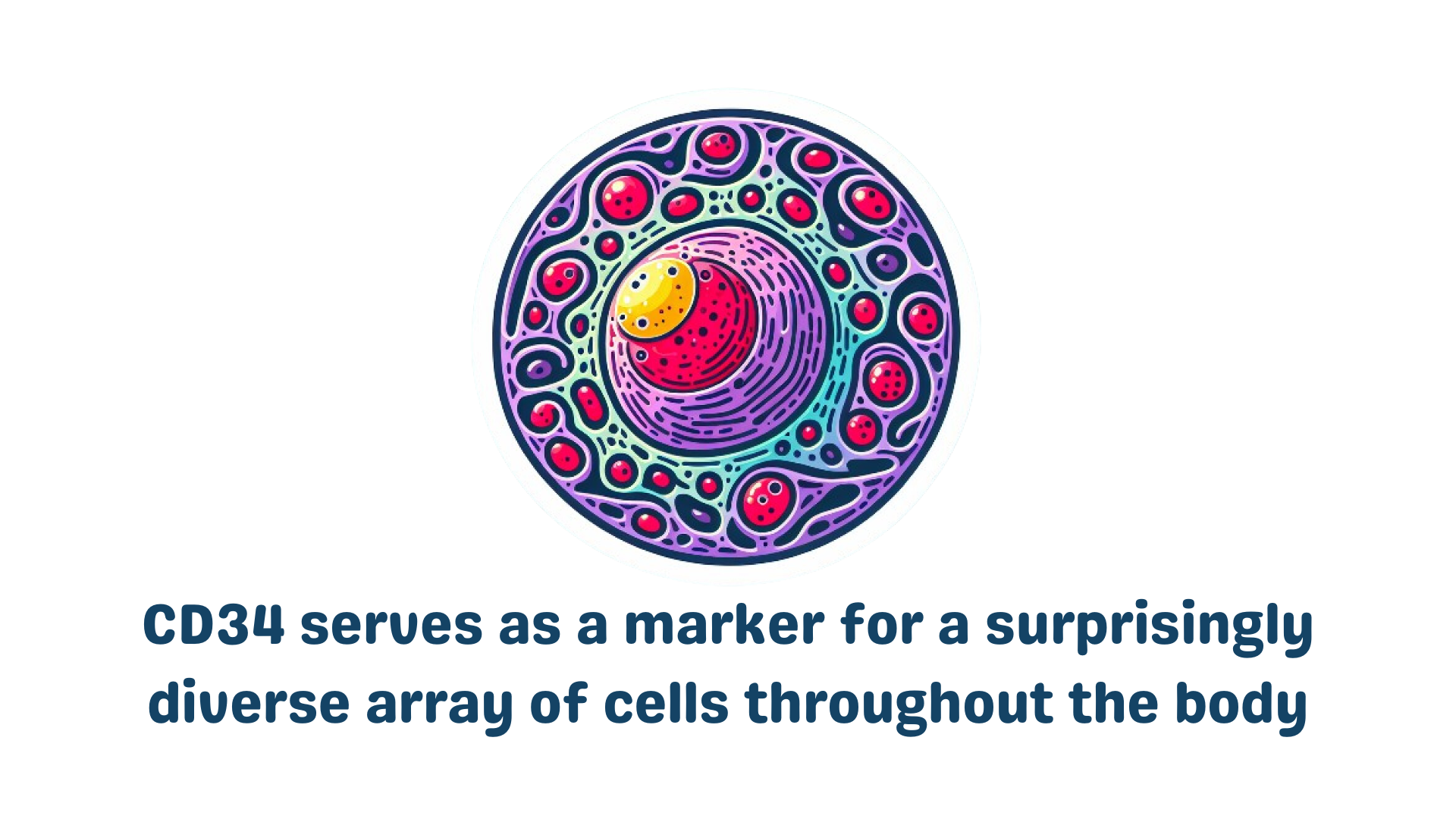
From blood-forming stem cells to muscle progenitors, the presence of CD34 spans across multiple tissue types and cellular functions. By examining each cell type in detail, we can gain a deeper understanding of CD34’s potential roles in cellular processes. We can also understand it’s significance in both normal physiology and disease states.
Let’s dive into CD34-expressing cells and uncover the unique characteristics and functions of each type.
Hematopoietic stem/progenitor cells
CD34 is an important marker in medical treatments, especially for bone marrow transplants. Doctors measure CD34 levels to help ensure successful transplants. They also use CD34 to select specific cells when they want to increase the number of early blood-forming cells.
It’s important to note that CD34 isn’t just found on stem cells. When bone marrow or blood samples exhibit CD34, it shows a mix of stem cells and early blood progenitor cells.
Scientists can tell the difference between blood-forming stem cells and other cells. They can tell the difference by looking at other markers along with CD34. Hematopoietic stem cells express a marker called CD90. They don’t have markers like CD38 and other markers found on mature blood cells.
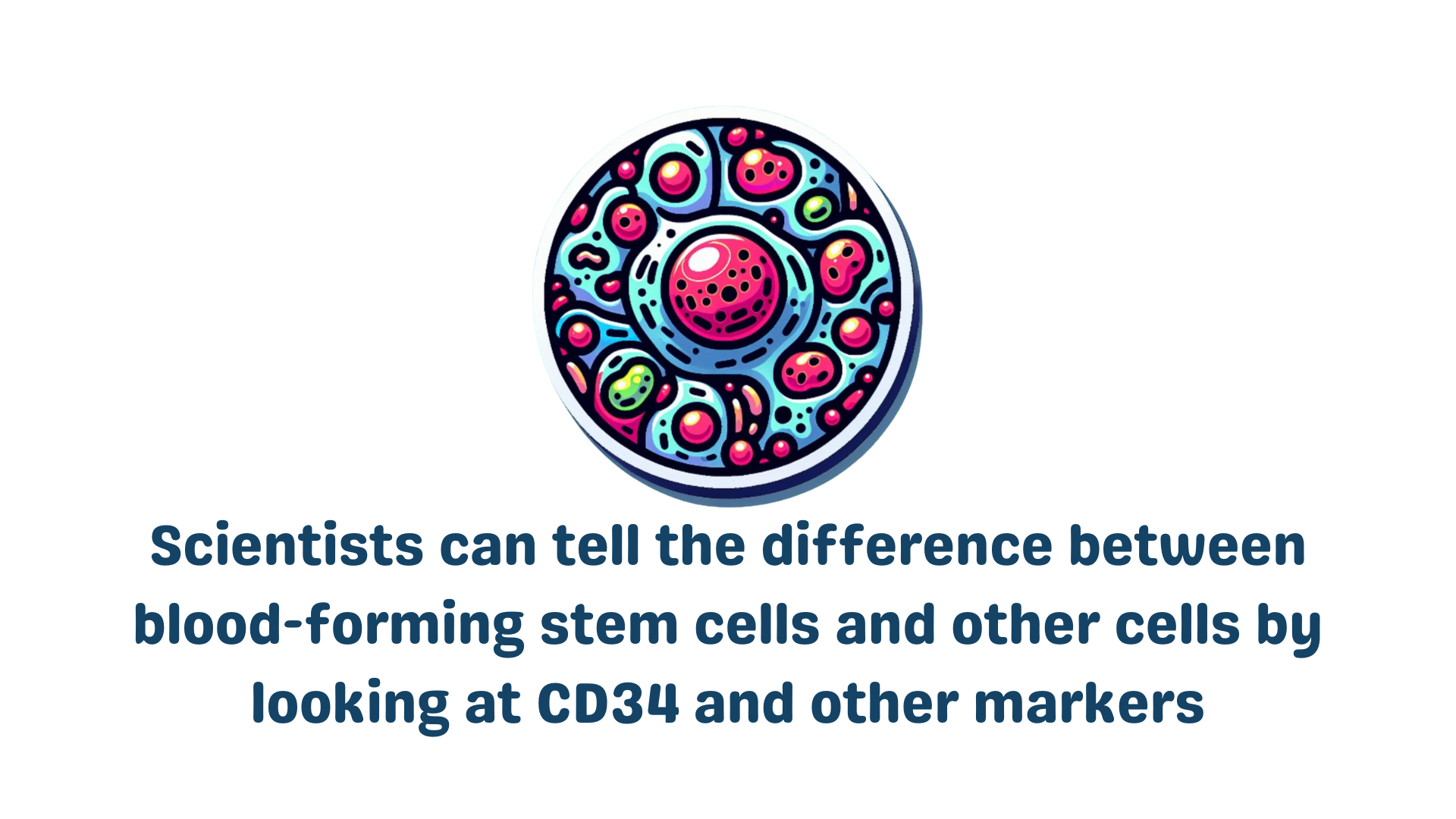
Human CD34+ blood-forming stem cells (HSCs) are special. They can turn into all types of blood cells. They can also multiply many times. Research has shown that CD34+ HSCs and related cells might even be able to turn into other types of cells. This includes cells like heart muscle cells, lung cells, and liver cells.
However, it’s crucial to understand that these CD34+ HSCs are incredibly rare in the human body. They make up only about 0.01% to 0.1% of all cells in bone marrow. This scarcity poses significant challenges for their isolation and use in medical treatments.
To overcome this limitation, researchers are increasingly turning to induced pluripotent stem cells (iPSCs) as a potential source for generating CD34+ HSCs. Trailhead aims to assist in the demand for HSCs by researching how to differentiate HPCs from iPSCs. By reprogramming adult cells into iPSCs and then differentiating them into CD34+ HSCs, Trailhead scientists aim to create a more abundant and accessible supply of these valuable cells for research and therapeutic applications.
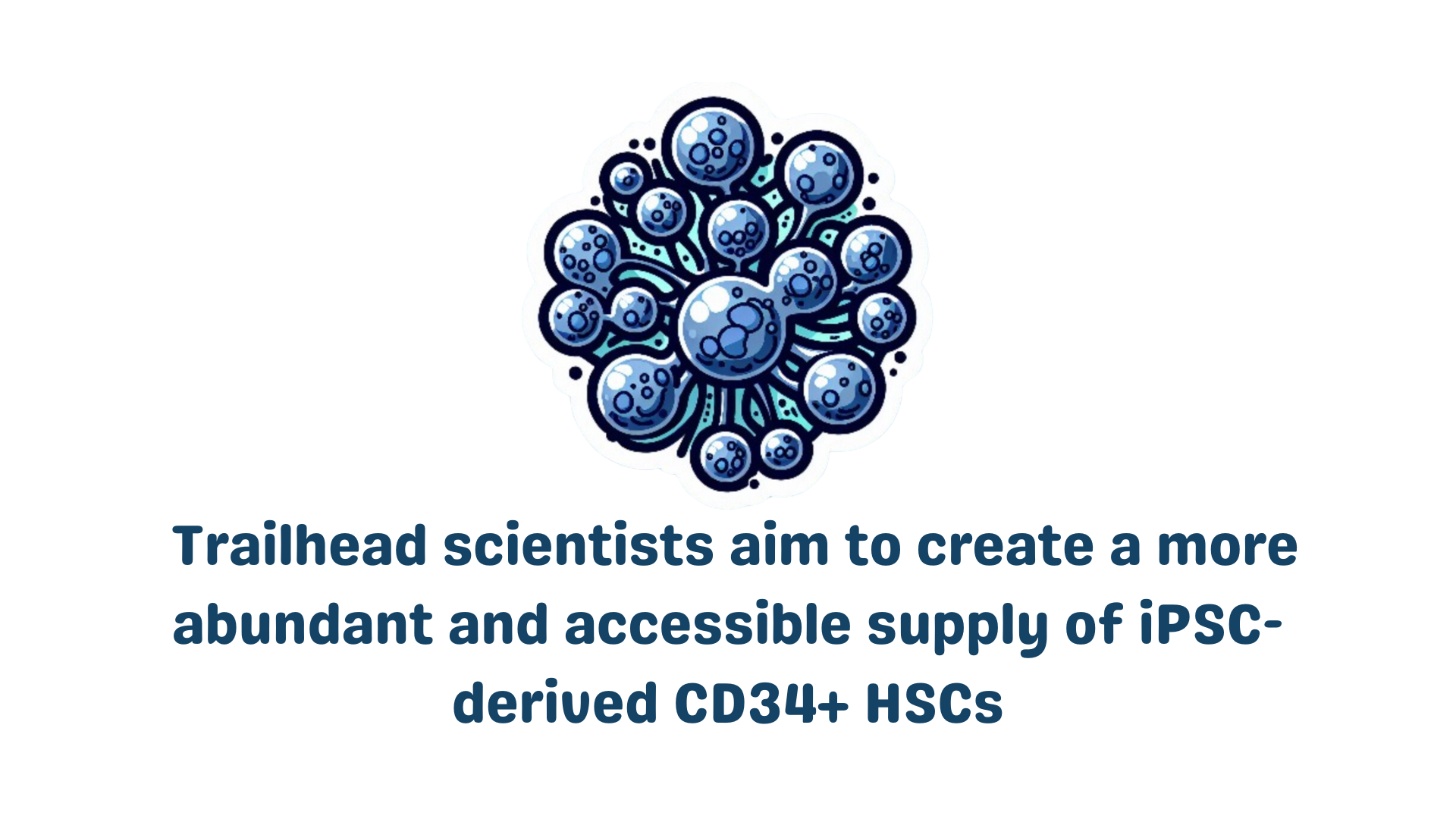
This information helps doctors and scientists understand how to use these cells in treatments. It also shows how versatile these cells can be, which could lead to new ways of treating diseases in the future. However, we need more research to fully understand how to use these capabilities in medical treatments.
Multipotent stromal cells (MSCs)
Multipotent stromal cells (MSCs) are special cells found in most adult tissues. Scientists study them for use in regenerative medicine, which aims to repair or replace damaged tissues.
MSCs can turn into different types of cells in lab conditions. They also have other useful abilities, like:
- Helping wounds heal
- Creating special environments in tissues
- Changing how the immune system works
- Not getting rejected by the immune system
These features make MSCs promising for treating various medical conditions, including tissue damage, autoimmune diseases, and in transplants.
Some studies found that MSCs from fat tissue can exhibit CD34. Scientists used to think CD34 wasn’t found in MSCs. One study looked at the structure of CD34 and what it does in MSCs. Another study questioned whether CD34 are actually absent in MSCs. Lin and colleagues reviewed these findings and pointed to earlier work by Simmons, which showed that bone marrow cells with CD34 were better at forming fibroblast-like cells than those without CD34.
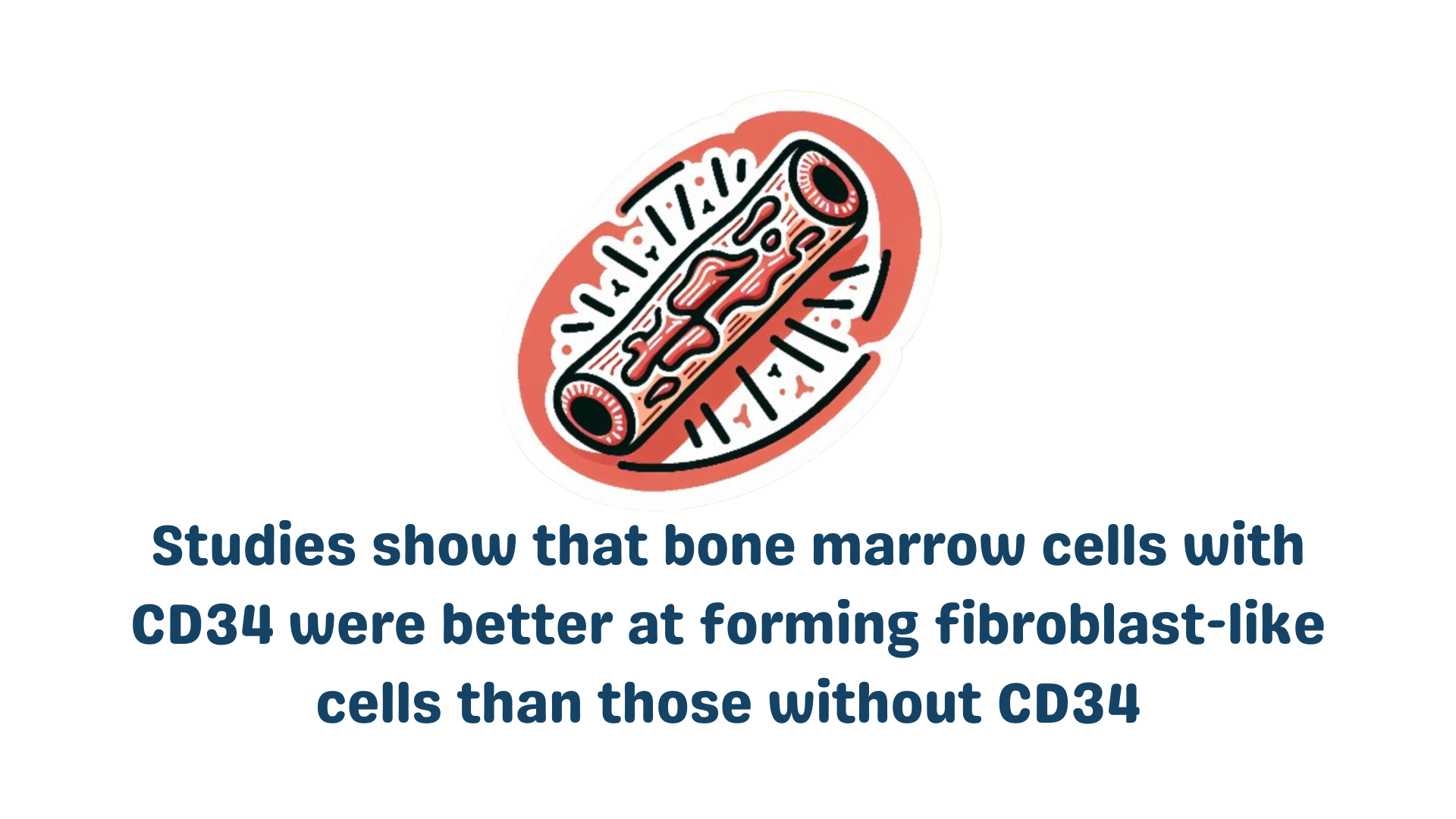
Some researchers think CD34 might actually be a good marker for MSCs that can help form blood vessels. These cells might be able to turn into the cells that line blood vessels. Scientists are exploring whether these CD34+ MSCs are useful in treating heart diseases or can help grow new tissues in the lab. However, we need more research to fully understand how CD34 works in MSCs and its role in blood vessel formation.
CD34+ cells make up at least part of the MSC population. These cells seem to be better at forming new cell colonies and can keep multiplying for longer. CD34+ MSCs also have other markers typically found on MSCs, like CD90, CD105, and CD73. They can also have markers usually found on other types of cells, like CD45 and CD133. This suggests that CD34+ MSCs might be a diverse group of cells with different functions.
CD34+ MSCs are better at turning into blood vessel lining cells. This ability is also seen in MSCs made from embryonic stem cells, which suggests that CD34 might be a sign of young, early-stage MSCs.
These findings show that MSCs are complex cells and that CD34 might be important for understanding how they work.
Muscle stem cells
Muscle satellite cells are small, special cells found in skeletal muscles. These cells can grow into mature muscle cells. Scientists often use CD34, a protein on the cell surface, to find and study these cells. Satellite cells are important for muscle growth and repair, so researchers are very interested in understanding how they work.
In the body, these cells usually stay quiet until they’re needed. When muscles become overworked or injured, satellite cells become active to help repair and grow muscle fibers. When these cells become active, they make more CD34. Scientists think CD34 might help control how satellite cells grow and change.
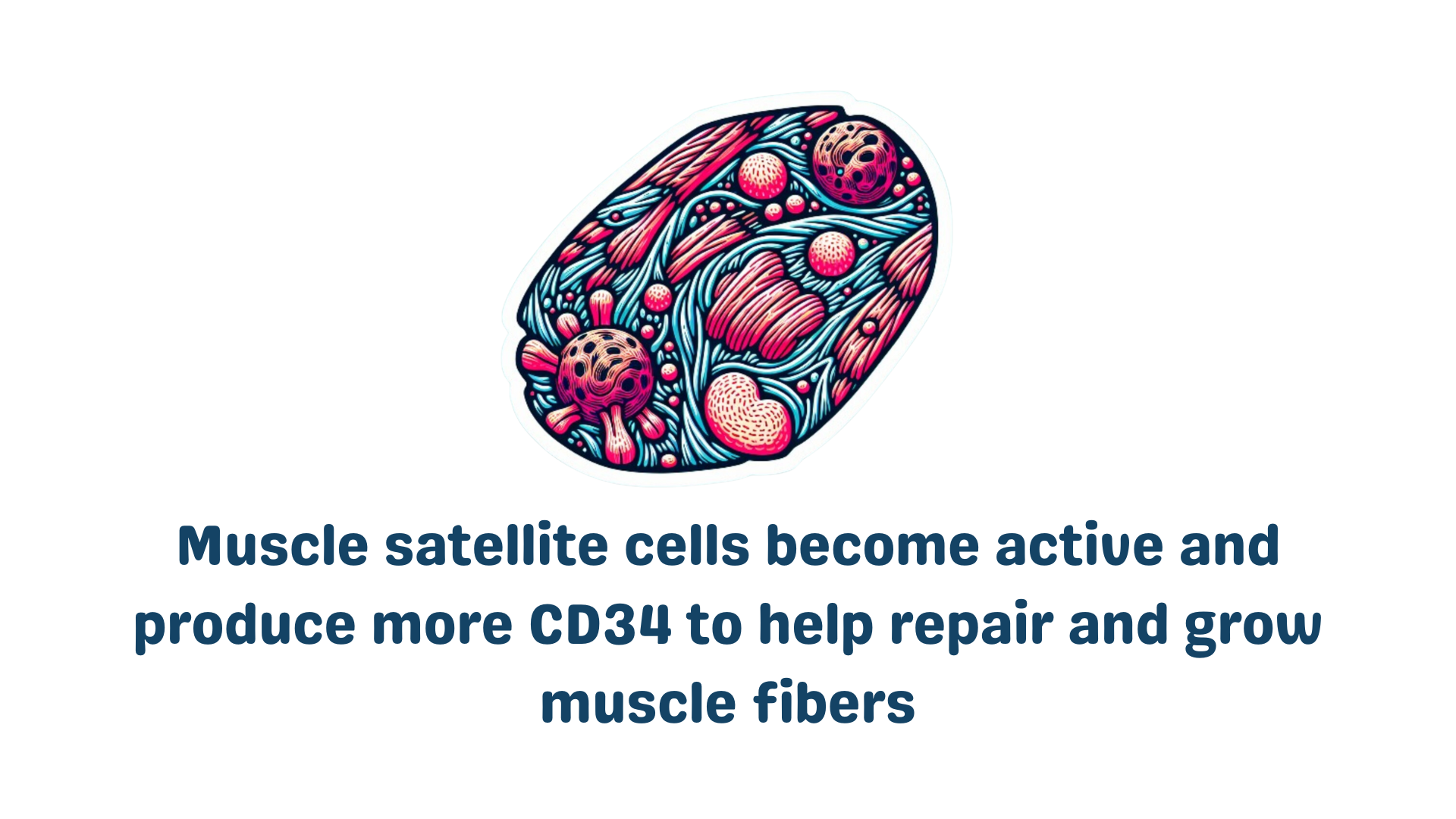
Not all satellite cells have CD34, but it’s still used to identify them along with other markers like CD56. The earliest muscle-forming cells don’t have CD34, but it appears as satellite cells develop.
More tests suggest that CD34+ cells might be able to do more than just form muscle. Some CD34+ cells in muscles can also turn into other types of cells, like bone or fat cells.
Some studies have found that CD34+ cells in the spaces between muscle fibers might be similar to cells that line blood vessels. These mixed muscle-blood vessel cells seem to be better at repairing muscle than cells that are just muscle or just blood vessel cells.
The differences in satellite cells might be because there are different types of CD34+ cells that can turn into different things. Other markers found with CD34 also affect what the cell can become. For example, CD34+ cells that also have CD31 (a blood vessel marker) tend to form new blood vessels. But CD34+ cells without CD31 are better at turning into fat or muscle tissue.
This information helps scientists understand how muscles grow and repair themselves. It could lead to new ways to treat muscle diseases or injuries in the future.
Endothelial cells
CD34 is often used as a marker for early blood vessel cells. These cells come from bone marrow and travel in the blood. They’re important for helping new blood vessels grow, which can be useful in many treatments.
CD34+ blood vessel cells are similar to blood-forming cells. Scientists can find both types in blood samples using CD34 as a marker. This makes these cells useful for treating various blood vessel problems. These cells can also turn into other cell types, like bone cells and heart muscle cells.
Matsumoto’s research suggests there might be a connection between early bone cells and early blood vessel cells. He thinks there might be CD34+ cells in bone marrow that can become either blood vessel cells or bone cells. Some studies have used CD34+ cells from blood to help heal broken bones, especially when there’s not enough blood flow to the broken area.
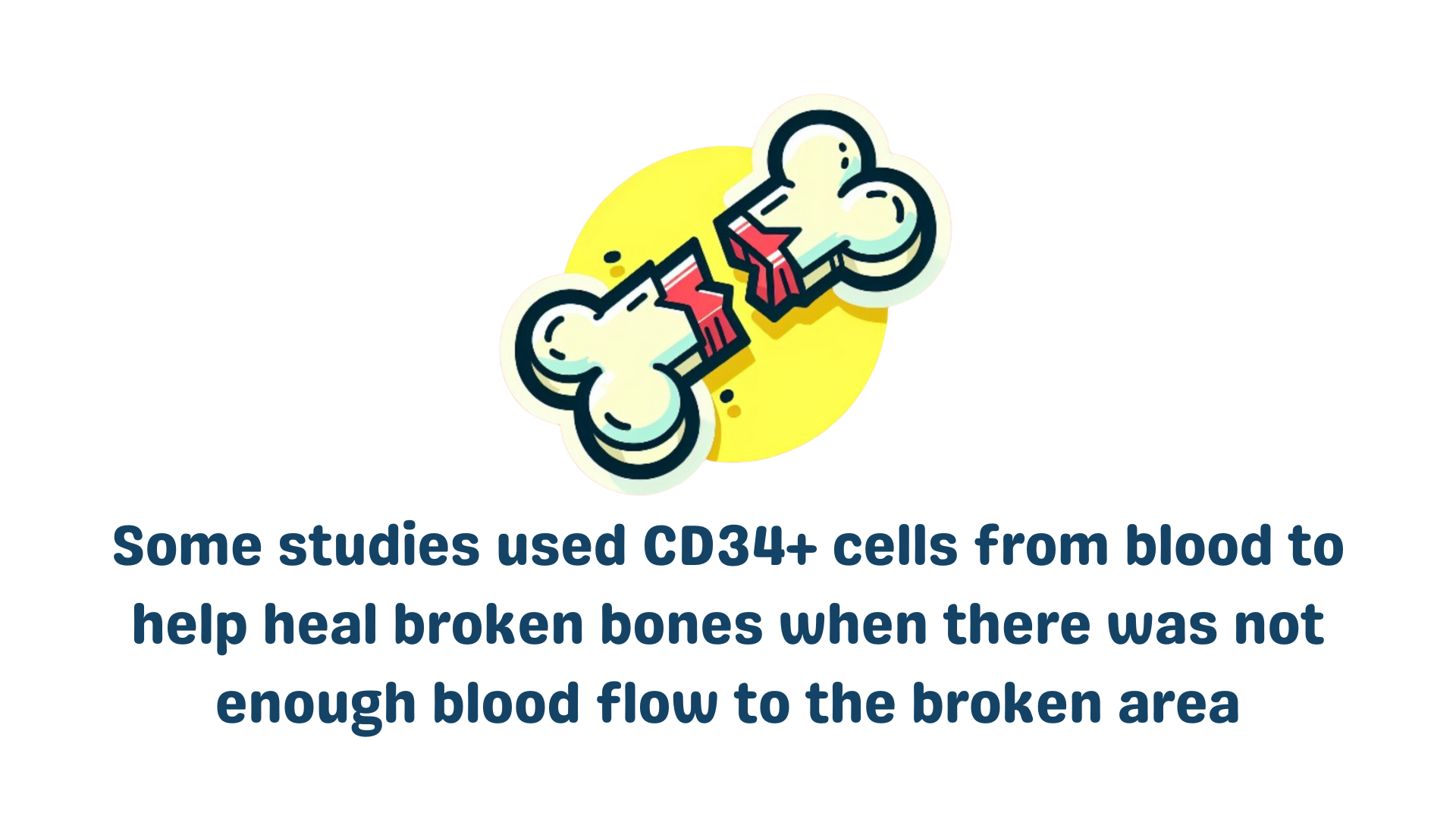
Scientists think there might be a group of mature blood vessel cells that have CD34 and are mostly found in small blood vessels. Most cells in larger blood vessels don’t have CD34. CD34+ blood vessel cells look different from regular blood vessel cells. They’re longer and don’t connect tightly to other cells.
Earlier studies of cells from umbilical cord veins showed CD34 when the cells were in the body. But when grown in the lab, most cells lost CD34. Only a few kept it. These CD34+ cells look unique and have many thin extensions called filopodia. A lot of these filopodia display CD34, especially where new blood vessels are growing. This suggests CD34 is important for how these early cells work.
This information helps scientists understand how blood vessels grow and repair themselves. It could lead to new ways to treat diseases that affect blood vessels or to help heal injuries. However, we need more research to fully understand how these cells work and how to use them in treatments.
Conclusion
CD34 is a complex protein that plays important roles in various parts of our body. It’s found on the surface of many different types of cells.
Scientists are still working to fully understand all of CD34’s functions. We know it plays a role in how cells stick together, move around, and develop into specialized cell types.
The presence of CD34 on so many different cells shows us the complex interconnectivity of our body’s systems. For example, CD34’s role in some mesodermal cellular development highlights the close relationship between our blood and circulatory systems.
Understanding CD34 better could lead to exciting medical advances. It might help us:
- Improve treatments for blood disorders
- Develop new ways to repair damaged tissues
- Create better methods for transplanting stem cells.
However, there’s still much to learn about CD34. Scientists continue to study this protein to uncover its secrets and potential uses in medicine. As research progresses, we may discover even more cell types that express CD34 and new ways that it affects our health.
In the end, CD34 serves as a reminder of how complex and amazing our bodies are. Even a single protein on the surface of our cells can have wide-reaching effects on our health and development. As we continue to explore cellular biology, CD34 will remain an important area of study. It could potentially lead to breakthroughs that could improve human health in the future.
